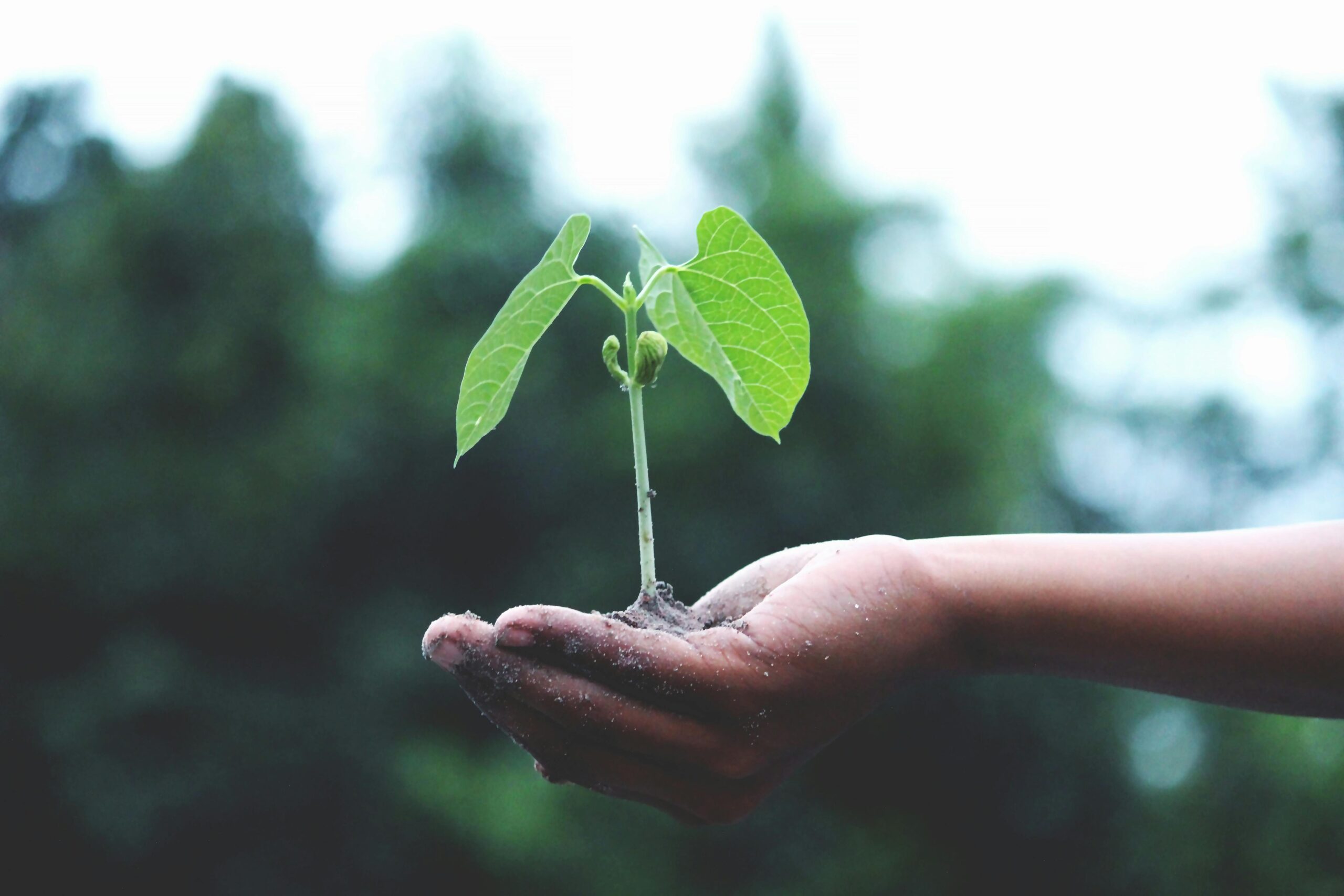Gardening is a lovely work that everyone likes. Gardening is not just an activity, it is a therapy. When you plant a small plant with your hands for the first time in the ground and see it grow, you get a different kind of peace.Gardening seems difficult in the beginning but to tell you the truth, gardening can be very easy even for beginners. Whether you have a small balcony or a big garden, you can fulfill your dream of greenery.
There are many benefits of this hobby:
Stress relief: Spending time in the garden calms the mind. Healthy lifestyle: You get fresh vegetables and herbs at home. Physical activity: Nurturing plants is also a good exercise. So let’s start your gardening journey in simple and easy language. This article will be a perfect guide for every beginner.
Types of Gardening:
1. Outdoor Gardening
- In-Ground Gardening – Traditional method using soil beds.
- Raised Bed Gardening – Uses elevated soil beds for better control.
- Container Gardening – Growing plants in pots and containers, great for small spaces.
2. Indoor Gardening
- Hydroponic Gardening – Growing plants in water without soil.
- Aquaponic Gardening – Combines fish farming with plant cultivation.
- Terrarium Gardening – Mini gardens inside glass containers.
3. Specialized Gardening
- Vertical Gardening – Growing plants on walls or trellises, ideal for limited space.
- Permaculture Gardening – A sustainable and self-sufficient approach.
- Square Foot Gardening – Dividing gardens into small, efficient sections.
4. Thematic Gardening
- Herbal Gardening – Growing medicinal and culinary herbs.
- Flower Gardening – Focusing on aesthetics with flowers and ornamentals.
- Organic Gardening – Using natural methods without synthetic chemicals.
1. Why Start Gardening?
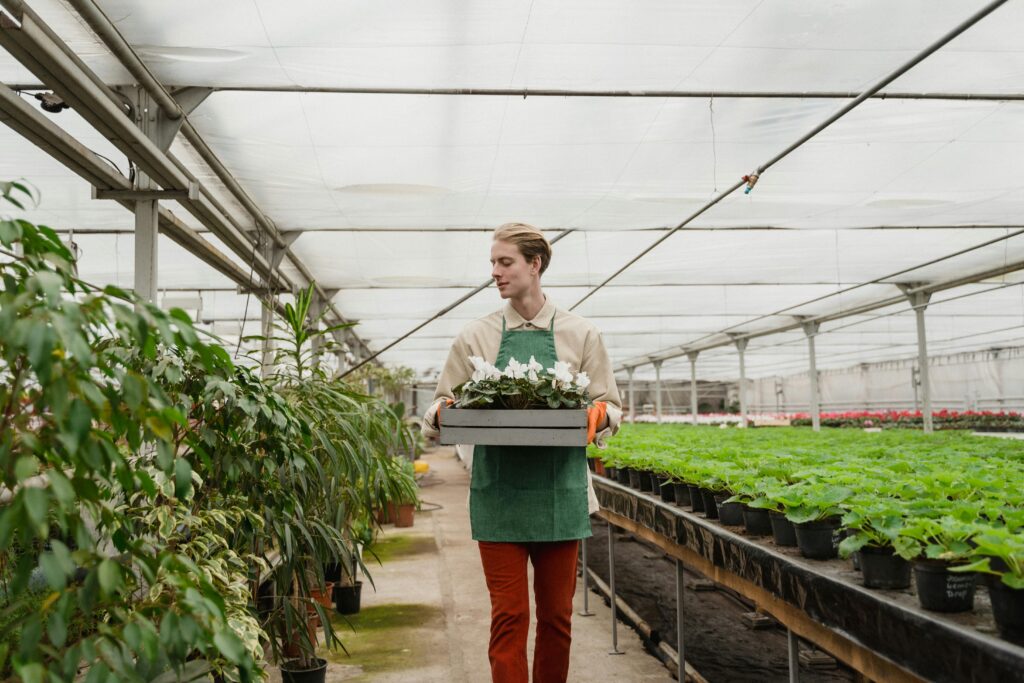
There can be many reasons to start gardening. It is not just a hobby, it can become a part of a healthy and beautiful life. Why you should start gardening? Let’s find out: Remove stress: In today’s fast paced life, we all feel stressed. Gardening is a natural stress buster.hen you spend time in the garden, your mind relaxes and you feel a sense of peace. Grow Fresh Vegetables and Herbs at Home: Plucking fresh vegetables or herbs from your home garden is a different kind of fun. You can grow easy plants like tomatoes, mint, coriander in your home garden. This will save your money and food will also taste fresh and tasty. Environment Friendly Lifestyle: You should do gardening to make the environment beautiful. Plants reduce pollution and produce fresh oxygen. You can also recycle your kitchen waste through composting. Best Source of Physical Activity: Gardening is a hobby that makes you physically active. Planting, digging soil, watering and taking care of plants is very good for the body.
2. Understanding the Basics
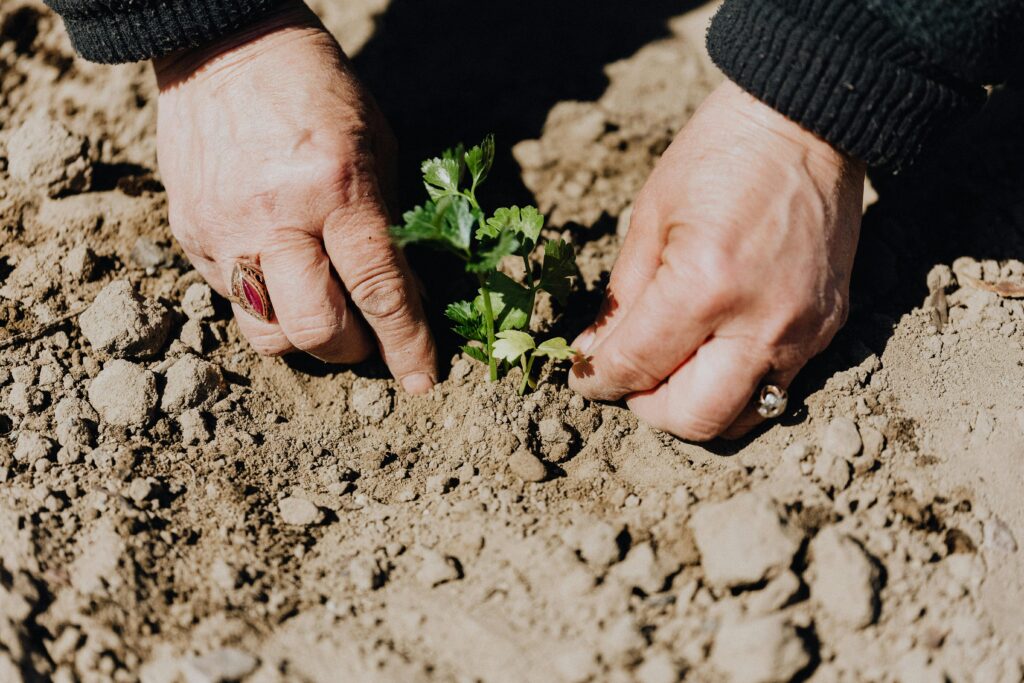
Before starting gardening, it is important to understand some basic things. This will strengthen the foundation and your plants will grow healthy. Let’s see what are the basics of gardening:
Choose a gardening space First decide where your garden will be: Outdoor Garden: If you have a backyard or terrace, you will get more options there. Indoor Gardening: If you have less space, you can grow indoor plants. Balcony Garden: Balcony is a perfect space for small potted plants and vertical gardens. Tip: Choose a place with more sunlight and air flow.
Pay attention to sunlight Sunlight is very important for plants. Full Sun Plants: Plants that require 6-8 hours of sunlight, like tomatoes and sunflowers. Partial Shade Plants: Plants that require only 3-4 hours of sunlight, like spinach and lettuce. Indoor Plants: Plants that grow even in low light, like money plant and snake plant. Tip: First observe your gardening space and see how much sunlight reaches there.
Watering Basics
Overwatering and underwatering damages plants. If the roots of the plants start drying up, water them. Water in the early morning or late evening so that the water does not evaporate too much. Tip: Every plant has a different requirement. So, water them according to their needs.
3. Tools You Need to Get Started
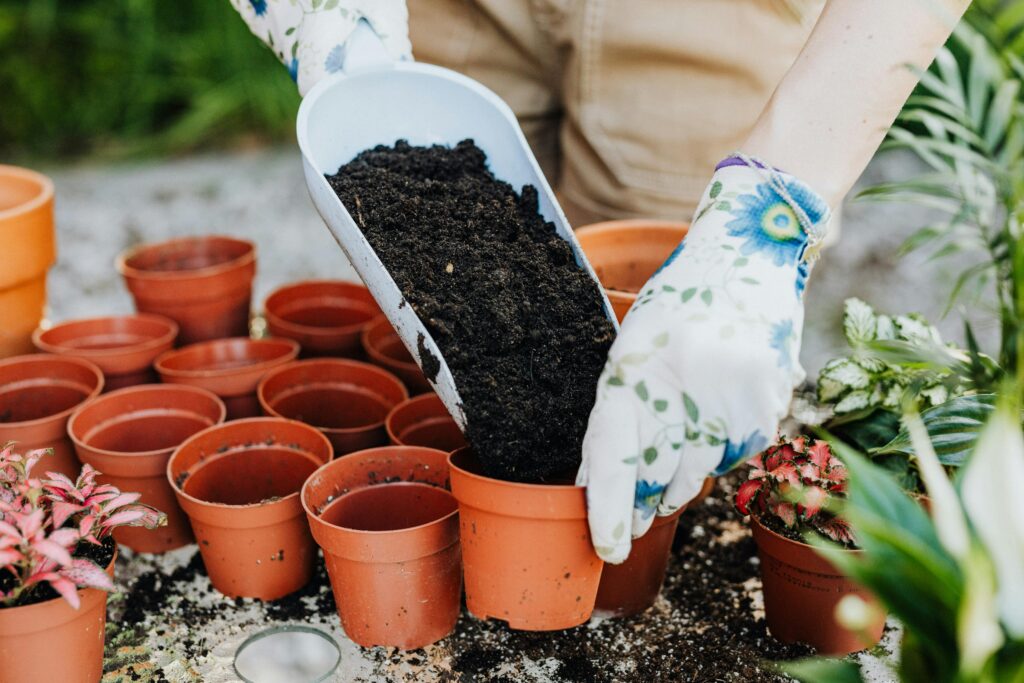
You do not need a lot of fancy tools to start gardening. You just need some basic tools that will make your work easy and effective. Let’s see which basic tools are necessary for beginners:
Gardening Gloves: It is important to keep your hands safe and clean while digging soil and handling plants. Why Needed: Gloves protect your hands from cuts, splinters, and dirt. Tip: Choose comfortable and durable gloves that are also waterproof
Trowel (Small Shovel): Trowel is a small gardening tool that helps in digging up soil and planting. Why Needed: plants.Perfect for potting, transplanting and removing weeds. Tip: Choose a trowel with a metal blade and a strong handle.
Watering Can: Watering plants is one of the most important tasks, and a watering can makes it easy. Why Needed: It distributes water in an even and controlled manner. Tip: Choose a watering can with a lightweight and long spout, which can easily reach every pot.
4. Picking the Right Plants
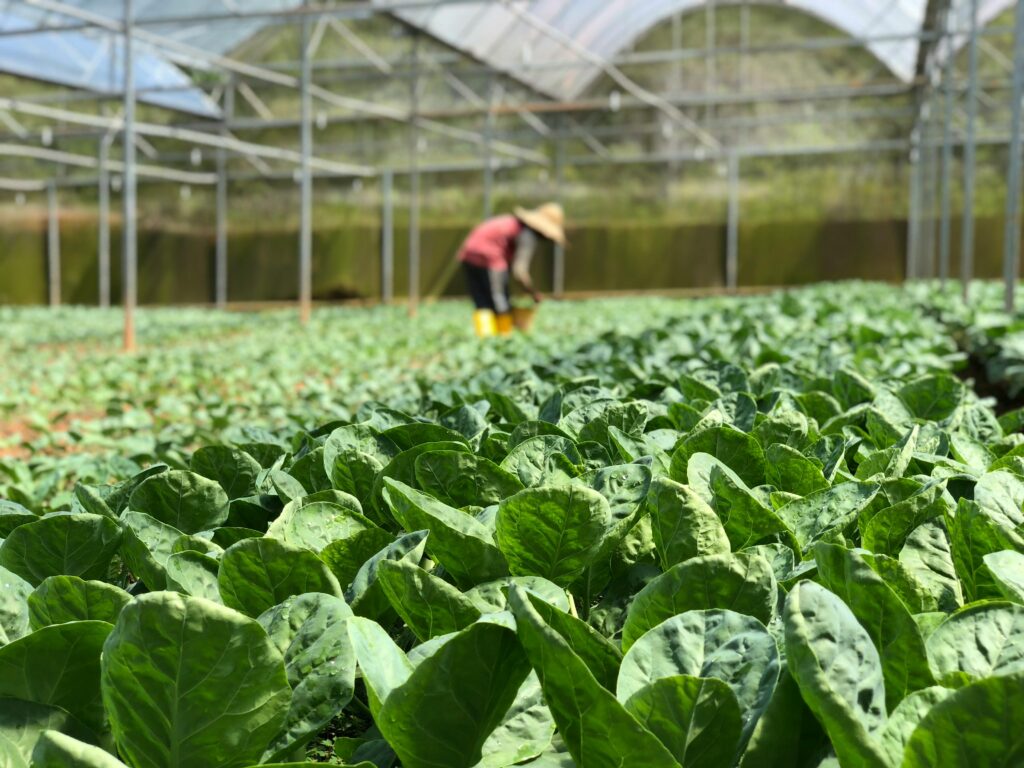
The most exciting part of gardening is choosing your plants! But for beginners it is important to select the right plants so that the gardening journey is easy and successful. Let’s see how to choose perfect plants:
Start with easy-to-grow plants If you are a beginner, choose plants that are simple to maintain. Herbs: Tulsi, Mint, Coriander. Vegetables: Tomatoes, Chillies, Fenugreek. Flowers: Marigold, Sunflower, Petunia. Tip:These plants grow well even with easy and less care.
Understand your climate zone Every plant grows in a specific temperature and weather. Warm Climate Plants: Tomatoes, Chillies, Basil.
Cool Climate Plants: Spinach, Broccoli, Lettuce.
All-Season Plants: Aloevera, Snake Plant, Money Plant. Tip: Check the gardening season of your area from the local nursery or online resources.
5. Soil Preparation
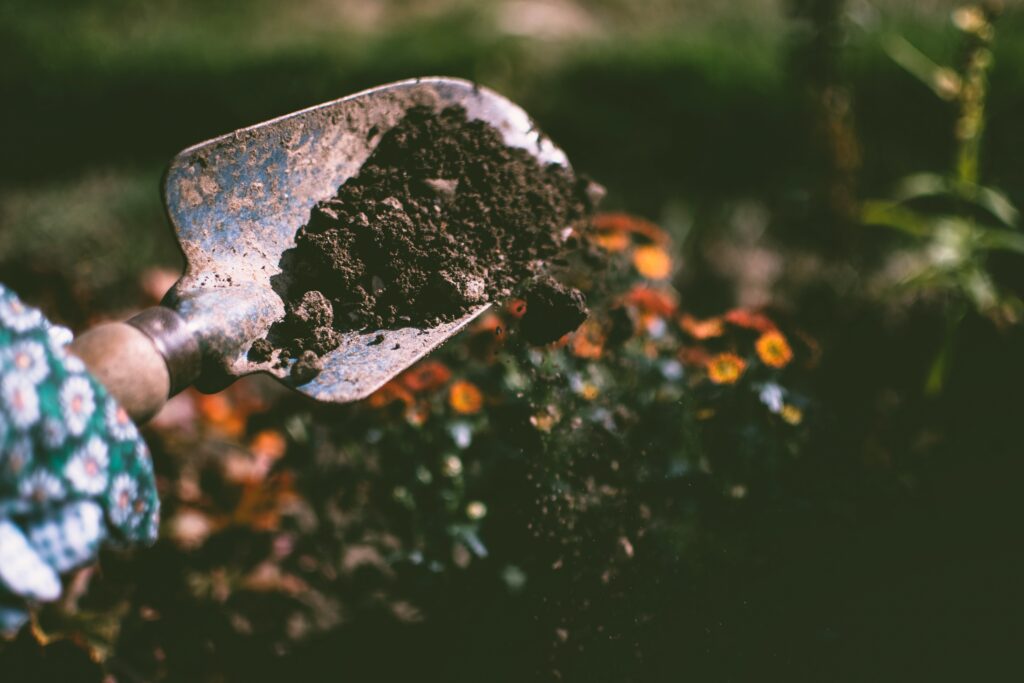
Healthy soil means healthy plants Checking the soil is the most important step before starting gardening. Good soil provides proper nutrients and support to grow plants. Let’s understand the basics of soil preparation:
Do a soil test First of all, check the quality of the soil: Why Needed: Check the soil to understand which nutrients are present and which are missing. How To Do: Get a soil test kit from the local nursery or use a professional soil testing service. Tip: The pH level of healthy soil should be between 6-7.
Add Fertilizers If the soil lacks some specific nutrients, use organic fertilizers: Nitrogen-Rich Fertilizers: for green leafy vegetables.
Phosphorus-Rich Fertilizers: for roots and flowers.
Potassium-Rich Fertilizers: for overall plant health.
Tip: Follow package instructions to avoid over-fertilizing.
Check drainage Waterlogged soil can damage plant roots. Ensure drainage holes in pots. Use raised beds or slopes for outdoor gardens.
6. Planting Step-by-Step
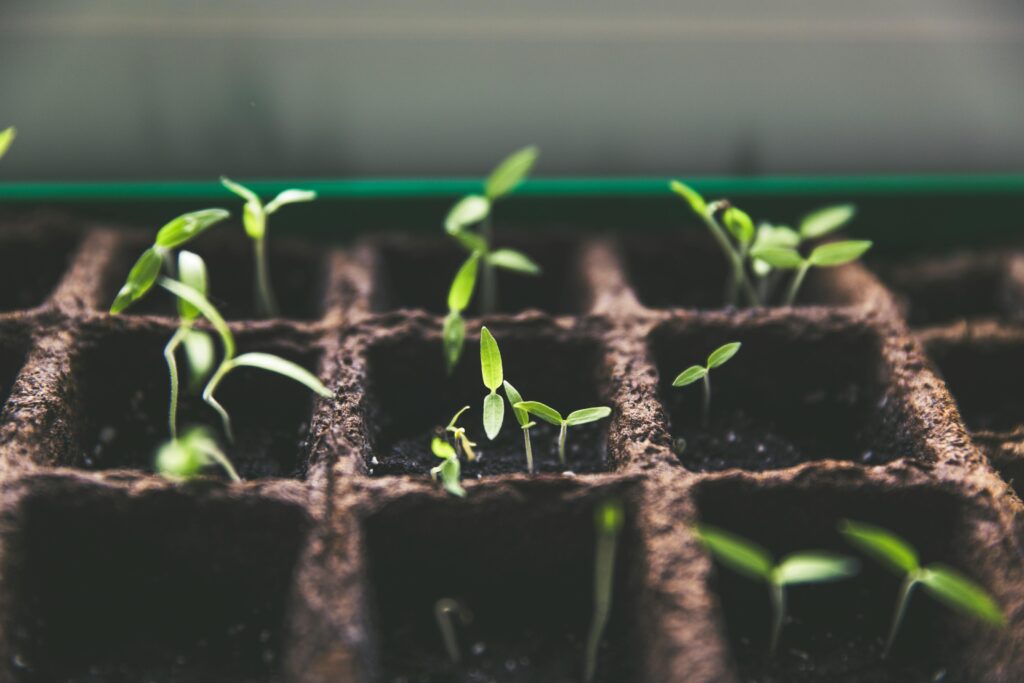
Planting plants correctly is an important part of gardening. If you follow the step-by-step process, your plants will grow healthy and strong. Let’s start an easy guide to planting:
Choose a location
Select a suitable location for your plant: Take care of sunlight and shade (according to the requirement of the plants). Ensure space so that the plants have enough space to grow their roots and leaves.
Tip: When starting gardening, start from a small place, like pots or balcony.
Prepare the soil
Make it nutrient-rich by adding loose soil and compost.
Mix the water and lightly moisten the soil for planting.
Tip: Check the drainage of the soil to avoid overwatering.
Keep proper spacing
Every plant needs proper space to grow. Small Plants: Keep a distance of 6-8 inches (like herbs). Big Plants: Keep a distance of 12-18 inches (like tomatoes or sunflowers). Tip: Follow the plant tags or instructions for spacing.
7. Watering and Maintenance
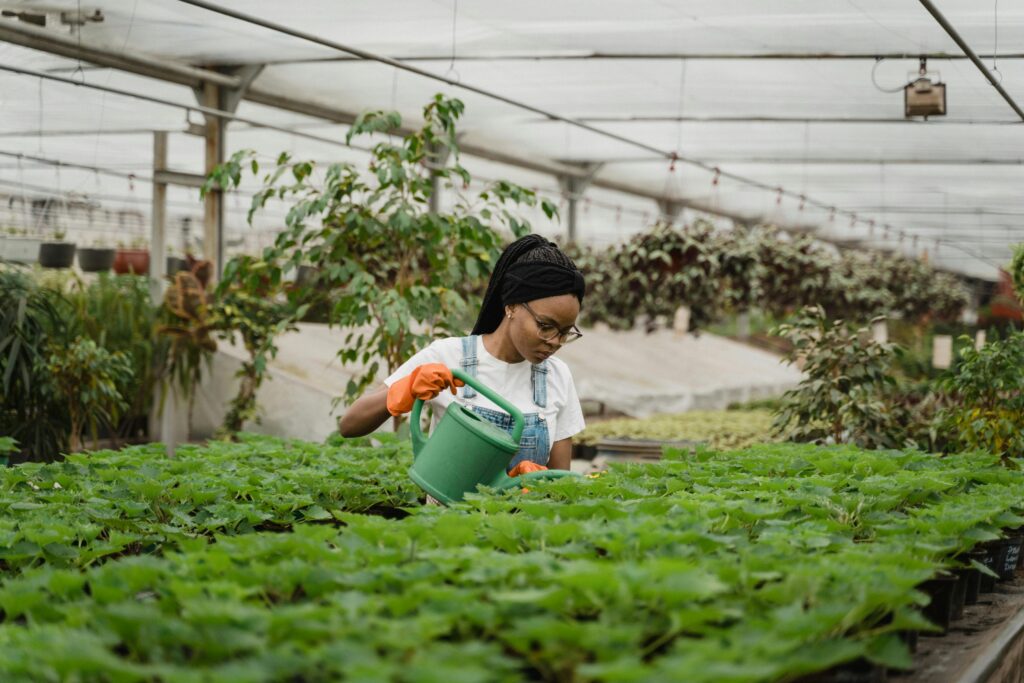
For the growth of plants, not only planting them, but also taking care of them is very important. Proper watering and regular maintenance make your plants healthy and long-lasting. Let’s understand the easy guide of watering and maintenance:
Watering Basics
How much water to give?
Every plant has its own water requirements. Indoor Plants: 1-2 times a week. Outdoor Plants: More watering in summer and less in winter. Vegetables: Keep the soil moist, but do not let it become waterlogged.
When to give water? It is best to water in the morning so that the plants stay hydrated throughout the day. Evening watering can also be done if it is not possible to water during the day. Tip: Check the soil with a finger. If it seems dry, then only give water.
Avoid Overwatering And Underwatering Overwatering Problems: Plants’ roots can suffocate and fungus or root rot can occur. Underwatering Problems: Plants become dry and weak and their growth slows. Tip: Potted plants’ pots must have drainage holes.
Do regular pruning Pruning is important to keep plants healthy. Cut off dry, yellow or damaged leaves. Trim off overgrown branches so that sunlight and air flow are proper. Tip: Use sharp and clean scissors for pruning.
Control Pests Pests affect the growth of plants. Natural Remedies: Use Garlic spray or Neem oil spray. Handpicking: Manually remove visible pests. Companion Planting: Flowers like Marigold keep pests away. Tip: Inspect plants regularly and treat pests in the early stage.
8. Dealing with Pests and Problems
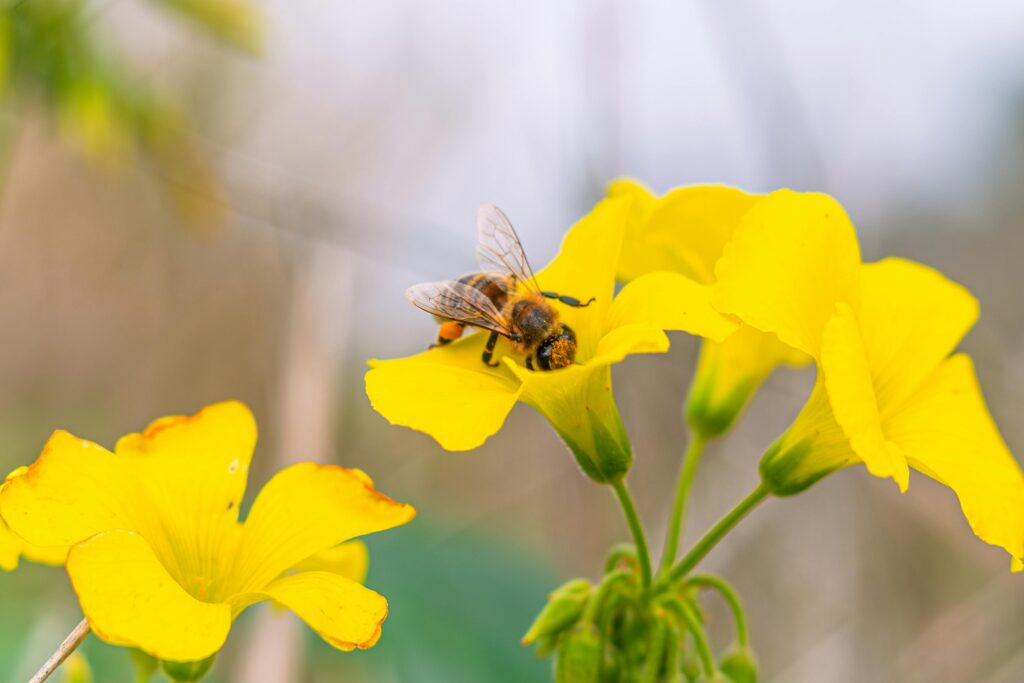
Gardening sometimes has to face pests and problems, but if you take timely action, you can keep your plants healthy. Let’s understand how to deal with pests and common gardening issues:
Common Pests and Their Solutions These are the common pests in your garden: Aphids (Small Green Insects) Symptoms: Leaves begin to curl and turn yellow. Solution: Use neem oil spray or garlic spray. Ladybugs also kill aphids naturally.
Mealybugs (White Cottony Pests) Symptoms: Sticky residue and white patches on leaves. Solution: Dip a cotton in rubbing alcohol and apply directly on mealybugs.
Snails and Slugs Symptoms: Leaves have holes or edges that appear to be cut. Solution: Put crushed eggshells or copper tape in the garden.Snails and slugs will naturally stay away.
Whiteflies Symptoms: Small white spores will appear beneath the leaves. Solution: Spray Neem oil and prune the infected leaves.
Control weeds Weeds absorb nutrients from the soil, which is harmful to plants.
Solution:
Regularly remove weeds manually.
Spread a layer of mulch to prevent weeds from growing.
Tip: Weed in the morning when the soil is soft.
9. Creating a Sustainable Garden
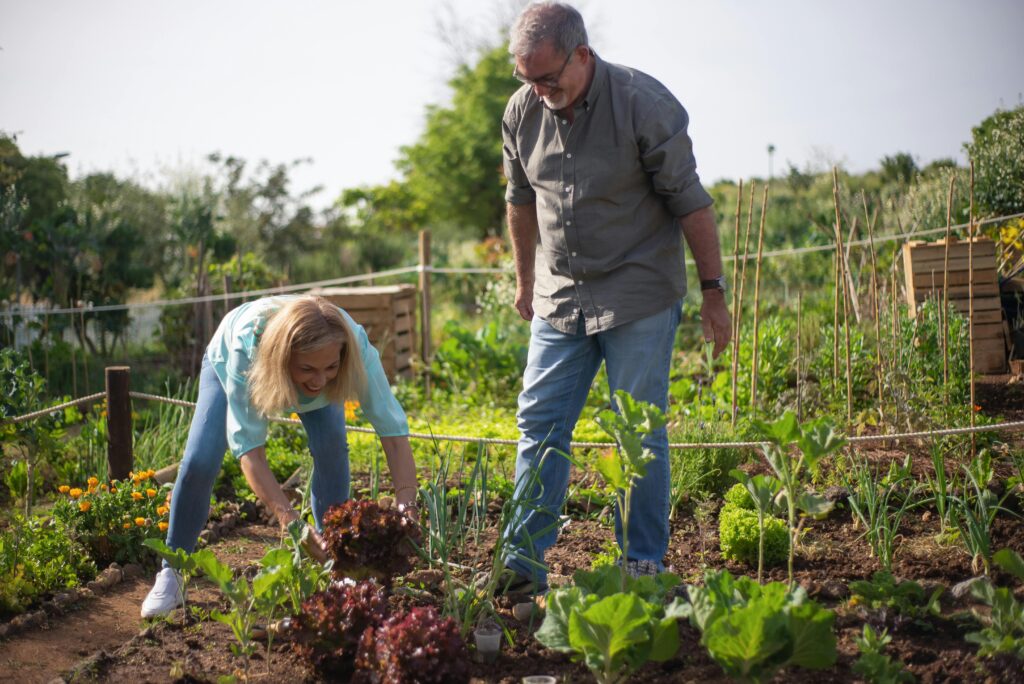
A sustainable garden is not only environment-friendly, but is also easy-to-maintain for you. Its focus is on making smart use of resources and reducing waste. Let’s explore tips for sustainable gardening:
Use composting Convert kitchen waste such as fruit peels, vegetable scraps, and dry leaves into compost.
Compost improves soil fertility and reduces the need for synthetic fertilizers.
Tip: Set up a small compost bin in your garden.
Water Conservation Techniques Avoid overwatering and adopt efficient watering methods. Drip Irrigation: Water reaches the roots directly, which reduces wastage. Rainwater Harvesting: Collect rainwater and use it in the garden. Mulching: Mulch retains the moisture of the soil and reduces the need for frequent watering. Tip: Water in the morning to reduce evaporation loss.
Grow Native Plants
Grow local plants of your area as they require less care and resources.
Native plants are more resistant to pests and diseases.
Examples: Neem, Hibiscus, Tulsi.
Adopt organic gardening Avoid the use of synthetic pesticides and fertilizers. Use natural remedies like neem oil and garlic spray to control pests and diseases. Tip: Pests are naturally repelled with the help of companion planting.
Promote biodiversity
Plant different types of plants in the garden (vegetables, flowers, herbs).
Grow colorful flowers to attract pollinators such as butterflies and bees.
Tip: Place bird feeders and water bowls in the garden so that the ecosystem remains balanced.
Reduce, Reuse, Recycle Use biodegradable or reusable containers instead of plastic pots in the garden. Convert old items like buckets, tins, or tires into planters. Tip: Repair and reuse gardening tools and accessories.
Follow Seasonal Planting
Grow suitable plants according to each season.
Planting out-of-season plants wastes a lot of resources and it is difficult to maintain them.
Examples: Summer Plants: Tomatoes, Chillies, Sunflowers. Winter Plants: Spinach, Peas, Marigold.
Save Seeds for the Future Collect seeds of healthy plants and save them for future planting. This practice is not only cost-efficient, but also self-sustaining. Tip: Store seeds in a dry and cool place.
10.Celebrating Your Garden
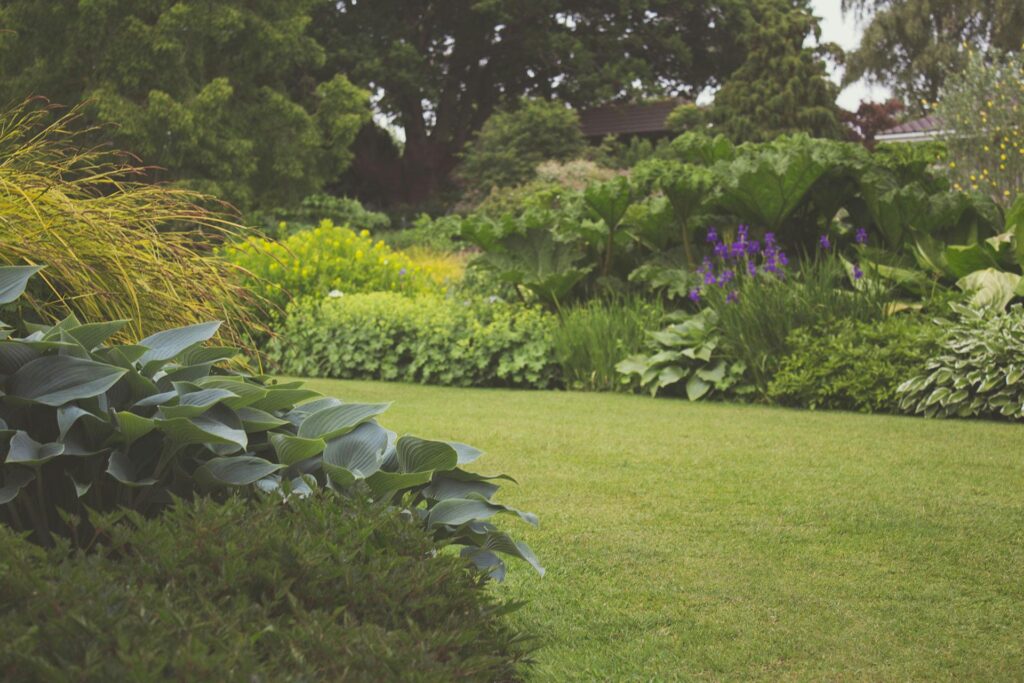
Your garden is not just a hobby, but the result of your hard work and dedication. It is equally important to celebrate your garden and enjoy its beauty and benefits. Let’s understand creative ways to enjoy and appreciate your garden:
Take a Tour of Your Garden Tour the garden regularly and enjoy the growth and beauty of the plants. Seeing new flowers or fruits is a proud moment! Tip: Track the progress of the garden by clicking photos from your phone.
Make the Outdoor Space a Relaxation Zone Set up a cozy corner in the garden where you can relax. Put a comfortable chair or hammock. Decorate the area with string lights and lanterns. Tip: Enjoy fresh air and nature by spending time in the garden in the evening.
Enjoy fresh produce If you have grown vegetables or herbs, celebrate them by using them in your meals. The taste of organic and fresh produce is unmatched. Example: make a salad of homegrown tomatoes or fresh mint tea.
Invite Friends and Family Organise small get-togethers in your garden. Garden parties, picnics or high-tea sessions are the best way to show the beauty of the garden and your efforts. Tip: Decorate the table using fresh flowers from your garden.
Welcome wildlife Place feeders and water bowls for pollinators and birds. Grow colorful flowers to attract butterflies and bees. Tip: This is a great way to feel connected to nature.
Maintain a Garden Journal Create a journal to record garden moments and achievements. Write down photos, plant growth tips, and memories. Tip: This journal will be helpful for future gardening projects.
11.Troubleshooting Common Challenges

It is normal to face some common challenges in gardening, but if you solve them timely, your garden can become lush and healthy. Let’s explore common gardening problems and their simple solutions:
Slow Plant Growth Problem: Plants are not growing or look weak. Cause: Poor soil quality, nutrient deficiency, or improper watering. Solution: Add compost or organic fertilizer to the soil.Check the watering routine—do not give too much or too little water. Tip: Plant the plants at an appropriate place after considering the sunlight requirement.
Yellowing Leaves Problem: Leaves look yellow and leafless. Cause: Overwatering, underwatering, or nutrient deficiency. Solution: Check the soil. If it is soggy, reduce watering. Use balanced fertilizer. Tip: Use pots with drainage holes to avoid overwatering.
Pest Infestation Problem: Leaves on holes, sticky residue or visible pests. Cause: Aphids, mealybugs, snails, or slugs. Solution: Spray neem oil to control pests. Use garlic spray or soap water as natural remedies.Remove snails and slugs manually. Tip: Plant companion plants like marigold which naturally repel pests.
Wilting Plants Problem: Plants look droopy and lifeless. Cause: Heat stress, underwatering, or root damage. Solution:Shift plants to shady area if wilting is due to excessive heat.Keep soil moist, but do not overwater. Tip: Observe early signs of wilting and take immediate action.
Weeds Overgrowth Problem: Weeds are growing and taking away nutrients from plants. Cause: Not doing regular maintenance. Solution: Manually remove weeds along with roots.Apply a layer of mulch on the soil which prevents weeds from growing. Tip: Early morning weeding is more effective.
12.Resources for Continued Learning
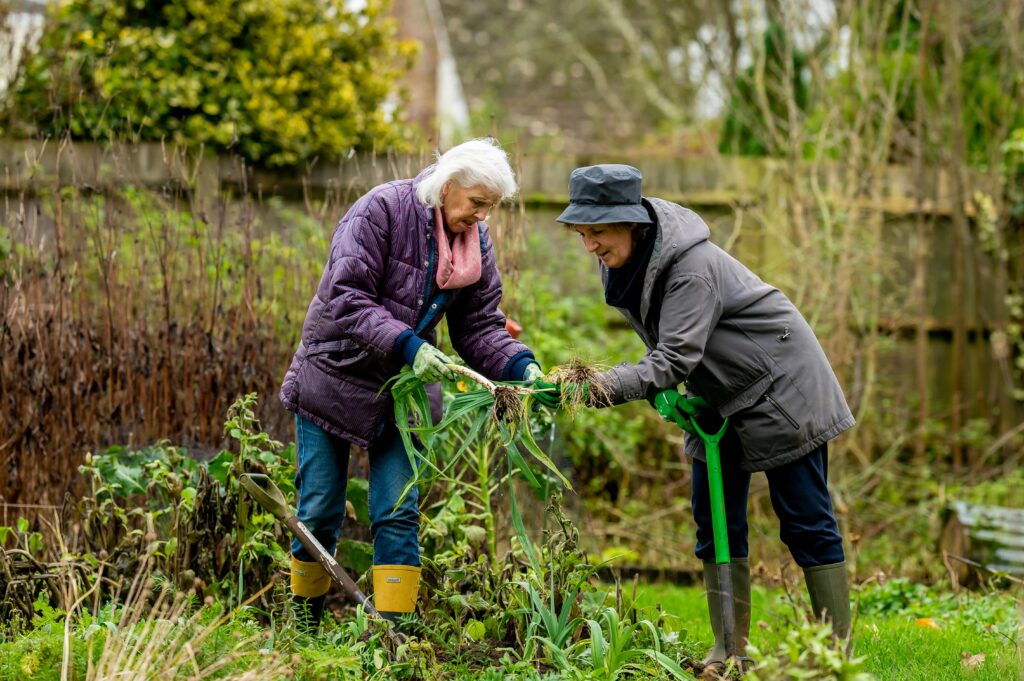
Gardening is a journey, and finding new techniques and ideas makes it even more exciting. You need reliable resources to grow your knowledge. Here are some helpful resources and tips that will help you become an expert gardener:
Books:
- The Gardener’s Journal
- All New Square Foot Gardening by Mel Bartholomew
- Organic Gardening for Beginners
Magazines:
Online Tutorials and Blogs
Free tutorials from many gardening experts are available on YouTube that give step-by-step guidance. trusted YouTube channels:
Garden Up by Ekta Chaudhary
Epic Gardening
Gardening blogs are also very useful:
1. Local Gardening Communities
Become part of gardening clubs or workshops in your area.
Discussions and sharing experiences in communities are very helpful.
2.Workshops and Webinars
Local nurseries and horticulture departments have organized gardening workshops.
Online webinars are very accessible and informative.
3.Government and NGO Initiatives
The Ministry of Agriculture or local government promotes gardening and environment-friendly practices.
He learned techniques by participating in gardening programs of NGOs.
4.Personal Experimentation
The best learning comes from experimenting in your own garden.
Grow your experience by trying different plants, layouts, and techniques.

